Harnessing the Entropy of Diamonds of the Night in One Static Image
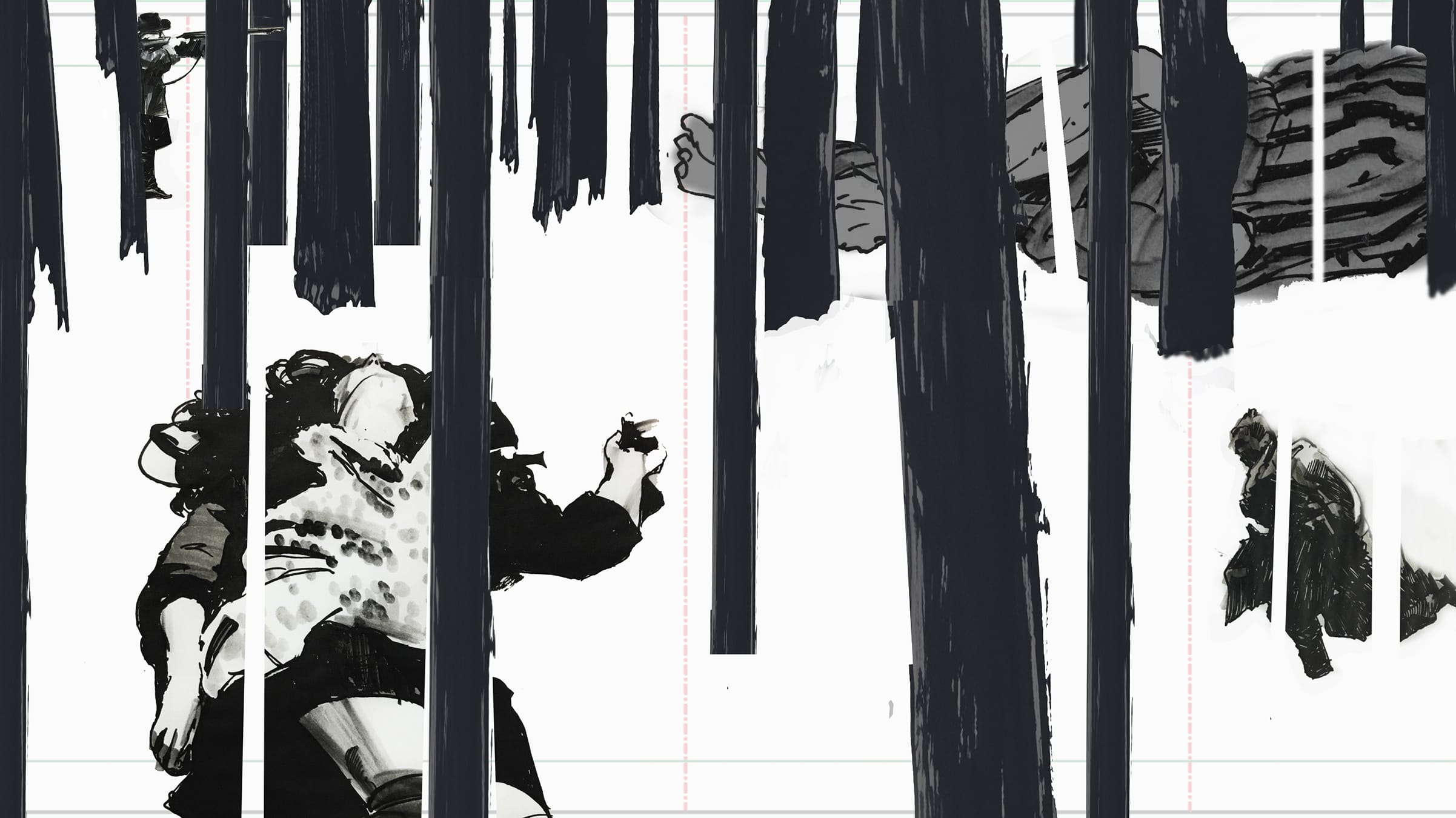
When Criterion art director Eric Skillman reached out to me with the opportunity to work on Diamonds of the Night, he started with the statement “I couldn’t get your new work out of my head as I watched the film.” As an artist driven to find my own voice, I couldn’t imagine a higher compliment than being commissioned to create work that is deeply personal. After watching the film, I realized that Eric’s insight delved deeper than a simple aesthetic connection—he was connecting the narrative of the film directly with my process and theories.
My work is a study of time as it relates to various subjects, and that theme is present in Jan Němec’s movie, which follows two young men who escape from a concentration-camp transport into the wilderness. The film emphasizes time by moving back and forth between a montage of memories and fantasies, and the frenetic and desperate attempt of two men trying to outrun an ideology.
Embedded within my methodology is an embrace of entropy. As you can see in the gallery at the bottom of this post, I create multiple layers, where each new drawing is covered completely and lost beneath the next. I generally work in three layers, with humble materials: packaging tape, a traditional dip pen, and ink that helps me capture individual elements. Each new layer begins with a fresh surface of packaging tape. Once I’ve completed drawing on the tape, I cover it with a new layer, and the process repeats. Then I use a utility knife to carve down through the layers of drawings, searching for lost elements, figures, and details. Working traditionally, I approach the process physically, and I am often faced with the choice of whether to keep an element or to continue to dig for something more interesting, at the cost of sacrificing the layer above.
In commercial illustration work, “interesting” often competes with the need for clarity of communication, while in my personal artwork I often get to define what it means. The process forces me to choose between abstraction and representation, line and shape, graphic and pattern, emotion and clarity, and often the unknown and the known. In this way, I am challenged to capture movement and time in a static, two-dimensional image.
Throughout the gatefold illustration for Diamonds of the Night, I used the verticality of the trees to create the effect of the kind of gutters that you would find between the pages of a graphic novel or comic book. This served as a way of splicing between past, present, and future. I hope that the final illustration captures the tone and emotion that Němec intended. I’m incredibly grateful to have been exposed to this powerful film. It was a challenge to capture, and I always love a good challenge.
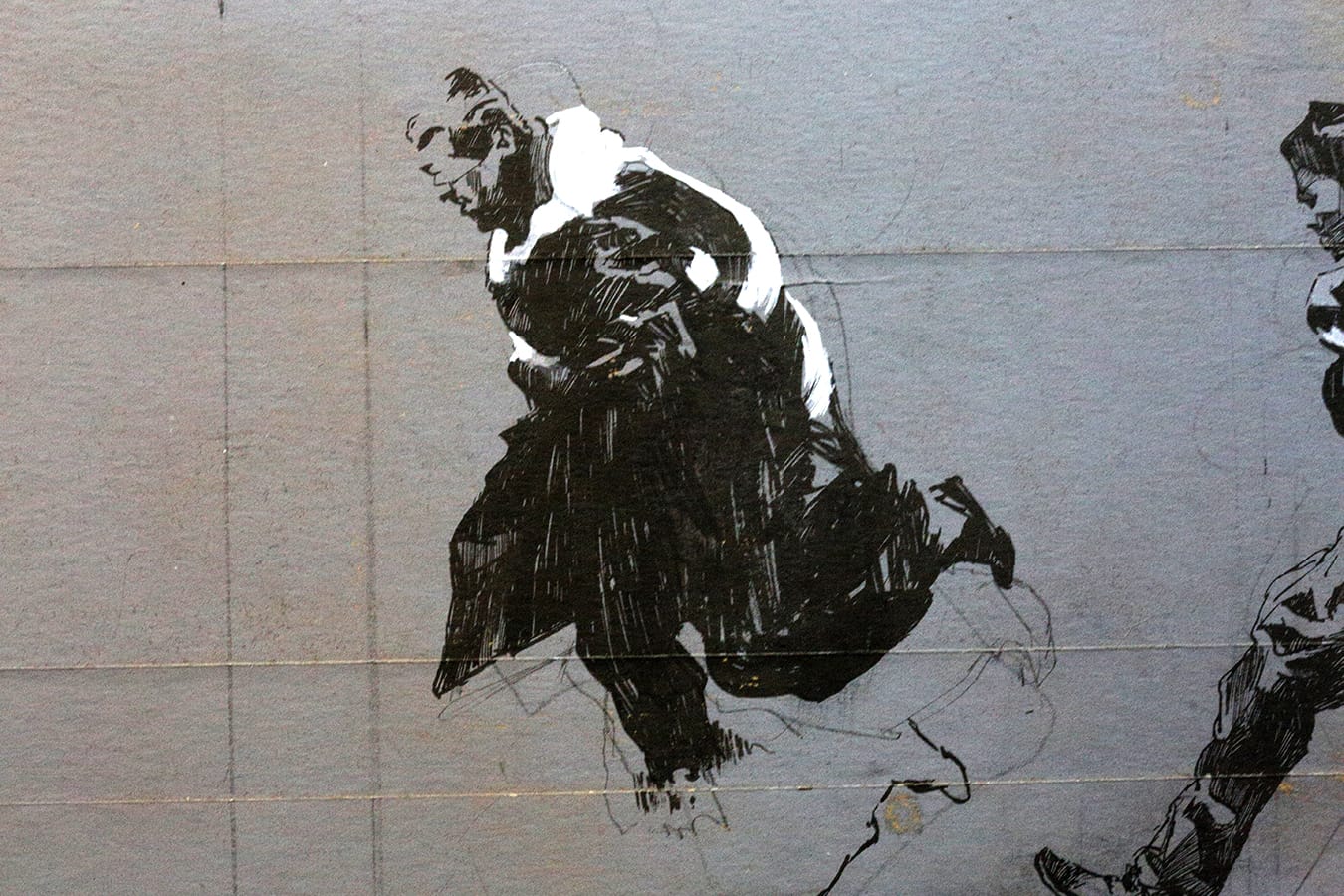
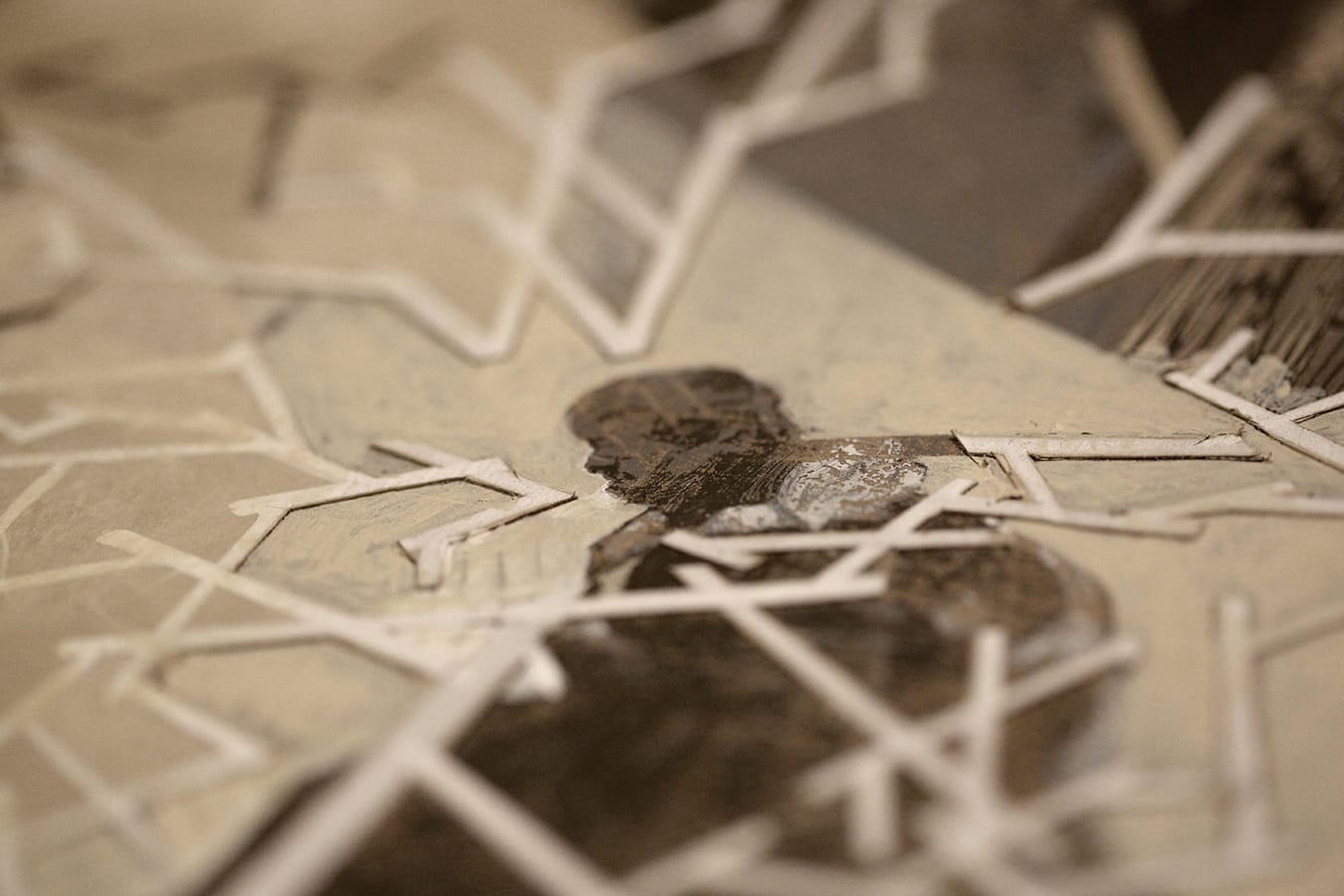
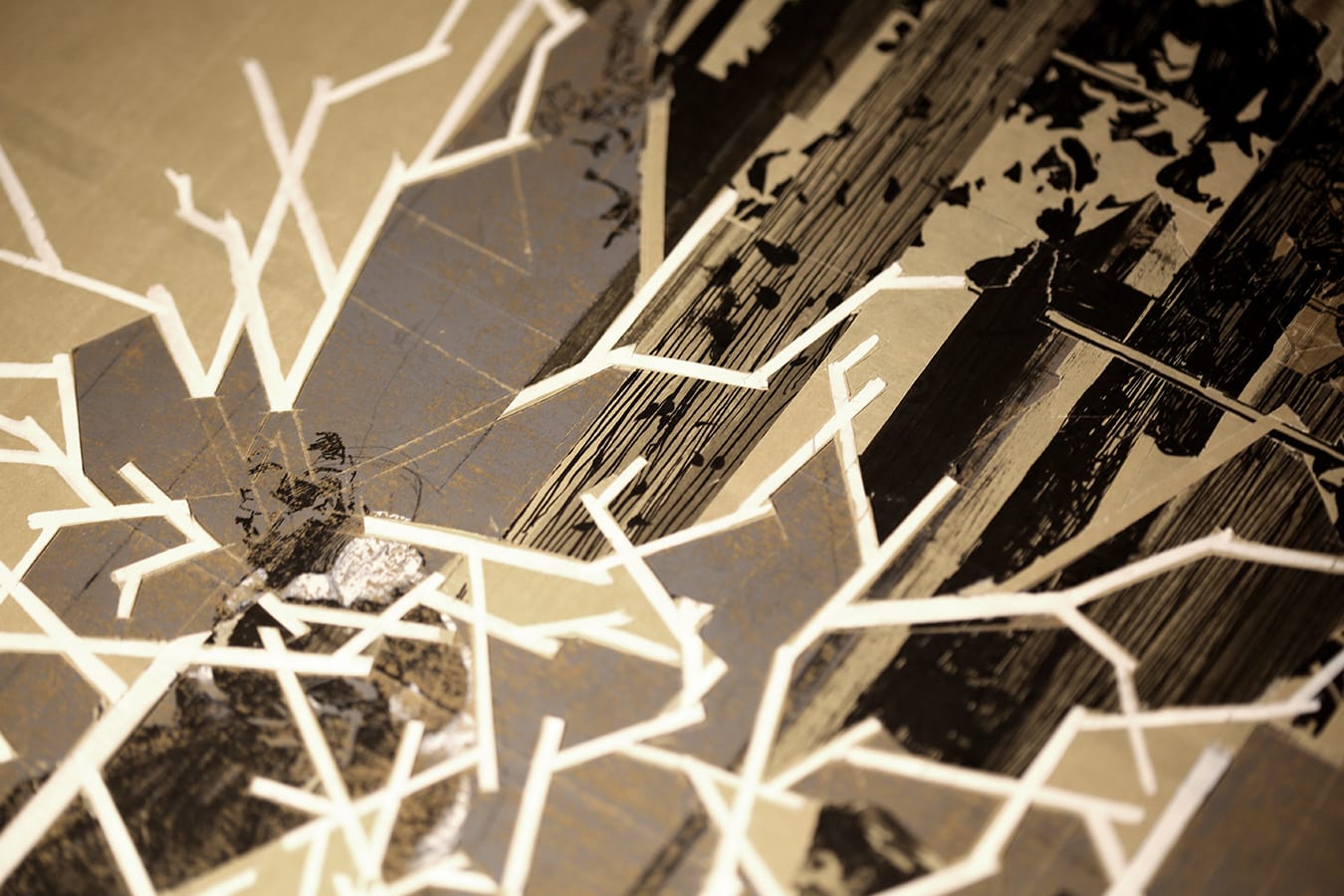
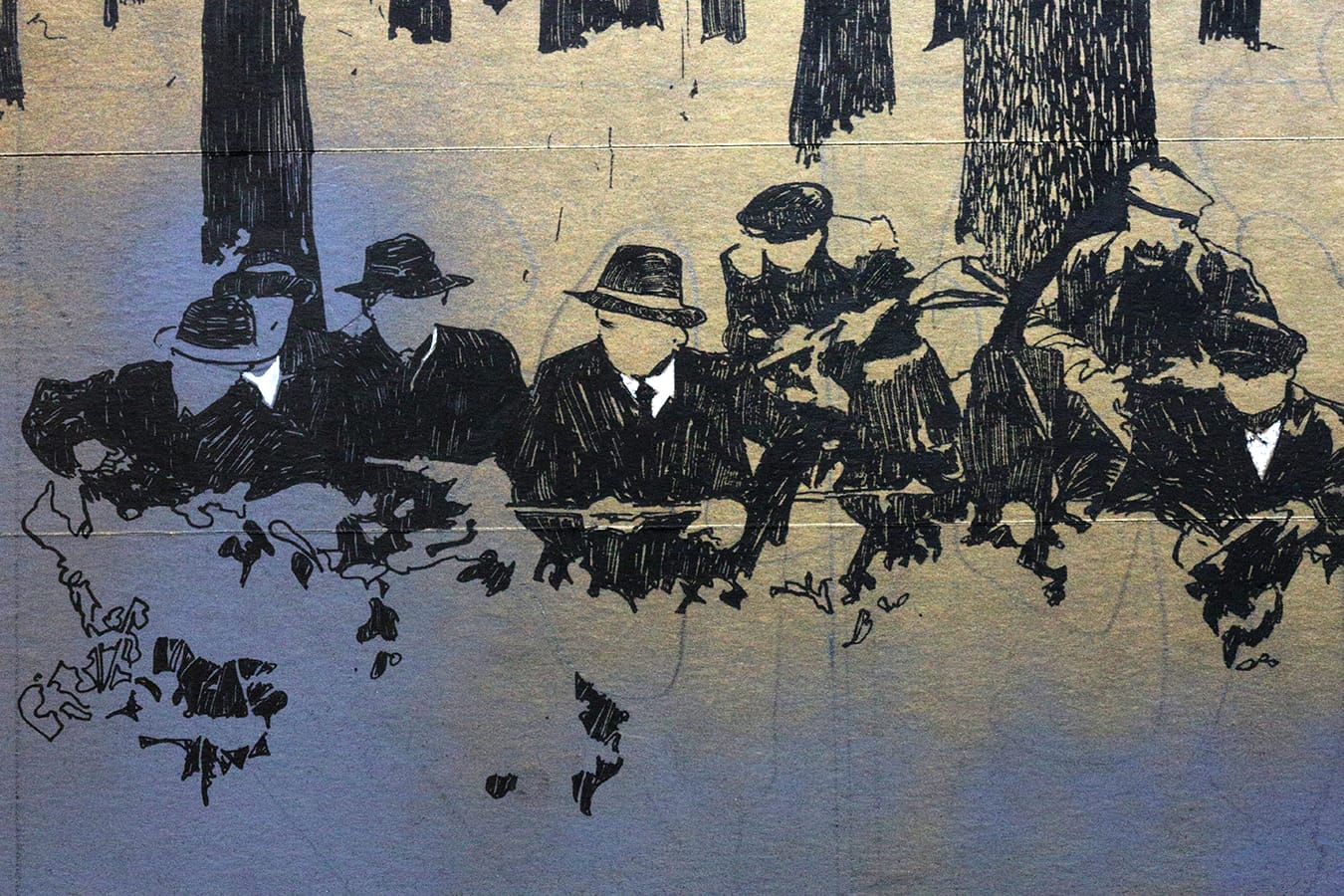
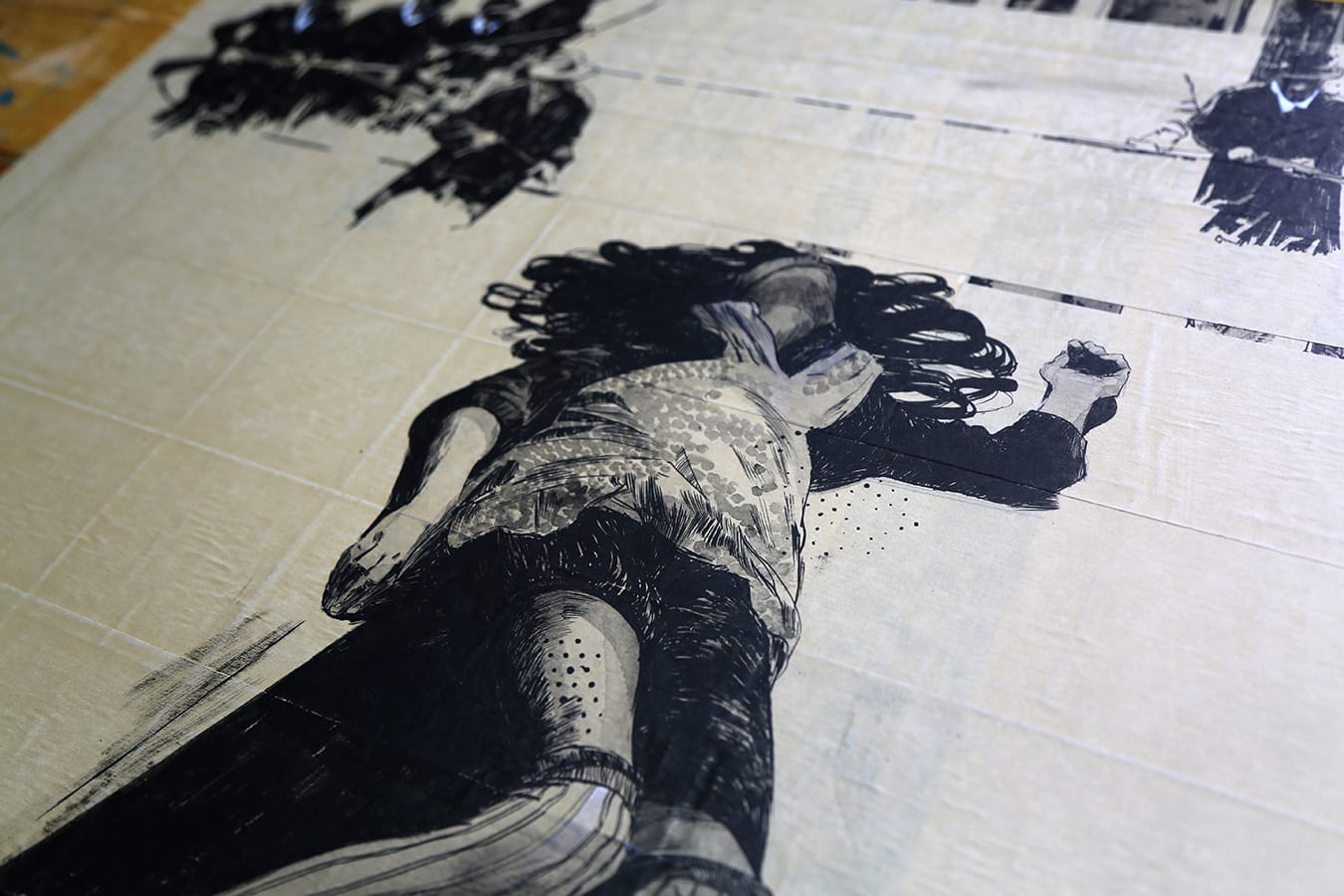
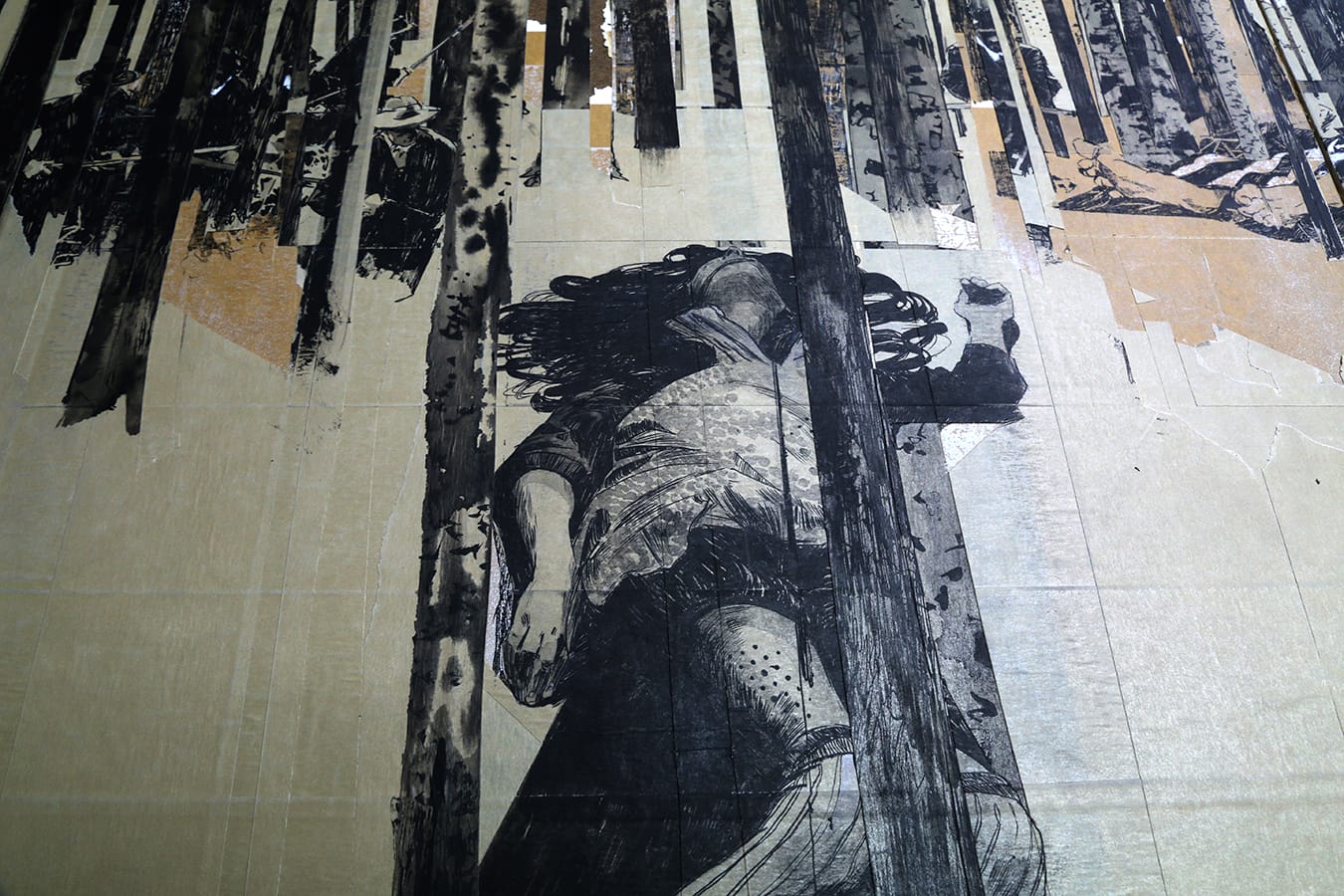

The final cover




